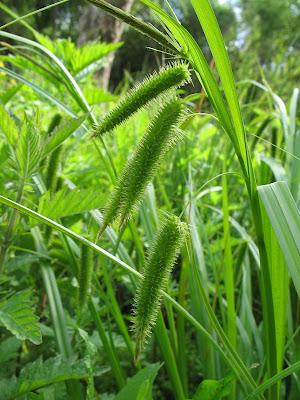
The release wasn't a very elegant process as he stayed fast asleep so I just had to roll him out of the bucket into some brambles to keep him hidden away until he woke up. Fingers crossed he had a good night exploring his new home.

Today has been a less successful day for Michelle 'Wildlife Rescue Ranger' as whilst unlocking the hides I found a deceased mole in the middle of the path. This is the second one in two weeks. Again, in a similar way to the hedgehog it is probably the dry weather which is the cause. The dry weather means earthworms borrow deeper into the ground and so they are out of reach of the moles tunnels.

I was quite fascinated by his very large front feet. They are perfect miniature shovels for digging through the ground.

At lunch time I met one of the children who had visited with her school during the week and had brought her daddy along especially to see the dead mole. So it was a lucky eerie coincidence that I had moved the dead mole to the grass by the pond where the other one was found!
It has been a very soggy day today but it did not put off the intrepid river explorers on the family river dipping event this morning. We went pond dipping, looked in the moth trap and splashed about in the river where we found a fantastic male minnow in his breeding colours of bright red and green - quite a stunner!
Our next family event is 'Catch the Bug' on 11th June when we will be exploring the meadow with sweep nets in the persual of grasshoppers, crickets, damselflies, ladybirds and lots more - book your place now!





 The rather cool and windy day means that there is not much in the way of insects to report on, but there was another reasonable haul in the moth trap, including angleshades, peppered moth , poplar hawkmoth and lesser swallow prominent (pictured). Also pictured below is an orangetip butterfly caterpillar that we have been keeping an eye on. Photographed on one of its common foodplants, hedge garlic, this afternoon it has been joined by a female common blue damselfly, who pulled the usual damselfly trick of creeping around the seedpod she was hanging onto in order to keep it between her and me.
The rather cool and windy day means that there is not much in the way of insects to report on, but there was another reasonable haul in the moth trap, including angleshades, peppered moth , poplar hawkmoth and lesser swallow prominent (pictured). Also pictured below is an orangetip butterfly caterpillar that we have been keeping an eye on. Photographed on one of its common foodplants, hedge garlic, this afternoon it has been joined by a female common blue damselfly, who pulled the usual damselfly trick of creeping around the seedpod she was hanging onto in order to keep it between her and me. 








































